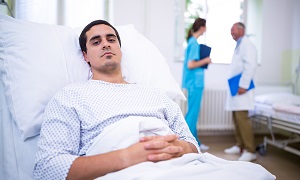Pancreatectomy
Pancreatectomy is the surgical removal of your pancreas. The pancreas is an important organ of your body and its functions are secreting digestive juices. It also secretes insulin and glucagon which are important for controlling blood sugar.
If a total pancreatectomy is being done, the organ is removed entirely. It is removed generally along with the gallbladder, spleen, common bile duct and portions of the small intestine and the stomach. In some cases, the procedure can also be distal, which means that only the body and tail of the pancreas are removed and the head of the organ remains attached.
Purpose
A pancreatectomy is considered the most effective treatment for cancer of the pancreas, your abdominal organ which secrets digestive enzymes, insulin as well as other hormones.
When the pancreas has been severely injured by trauma, especially bodily injury then a partial pancreatectomy might be recommended. Such a surgery generally leaves minimal side effects.
Pancreatectomy is also the preferred treatment for another condition known as chronic pancreatitis. Chronic pancreatitis can result in the organ getting damaged permanently. This condition can result from alcohol abuse or the presence of gallstones. In most patients, with alcohol-induced disease, where the pancreas is widely involved and therefore, surgical correction is nearly impossible.
Preparation
If you are suffering from symptoms of a pancreatic disorder, you may undergo several tests before your doctor considers surgery. These tests can include ultrasonography, CT scan, angiography or ERCP. These tests are important to diagnose your condition properly so that the surgery can be planned properly.
Talk with your doctor and discuss if you need to avoid certain medications. Make sure you refrain from smoking for some days before and after your surgery.
Procedure
A pancreatectomy can be performed through an open surgery technique, in which one large incision is created. Sometimes the procedure might also be done laparoscopically, in which the surgeon can make four small incisions to insert the surgical instruments. The abdomen is then filled with gas, usually carbon dioxide for helping the surgeon view the abdominal cavity.
Next, a camera is inserted through one of the tubes and it displays images on a monitor in the operating room. Other instruments are placed through the additional tubes as well. The laparoscopic approach can allow the surgeon to work inside the patient’s abdomen without the need for a large incision.
If the pancreatectomy required is partial, the surgeon clamps and then cuts the blood vessels, after which the pancreas is stapled as well as divided for removal.
If the pancreatectomy required is in total, your surgeon will be removing the entire pancreas and attached organs. He/she begins by dividing and detaching the end of the stomach, the part which leads to the small intestine, where the pancreas and bile ducts both attach.
In the next step, he/she will be removing the pancreas along with the connected section of your small intestine. The common bile duct is removed as well as the gall bladder. For reconnecting the intestinal tract, the stomach and the bile duct are then reconnected to the small intestine.
Recovery
After the recovery, you might need to stay at the hospital for one to three weeks. You might require the following:
- Abdominal drains for draining extra fluid
- Bladder catheter for emptying urine from the bladder
- Nasogastric tube placed into your nose and down
Depending on the situation, you might also be requiring the following:
- Epidural tube for delivering pain medications
- Feeding tube placed into your stomach for providing nutrition
While you leave the hospital, you might be leaving with some of these drains or tubes. Your healthcare team will provide you specific instructions regarding your diet after your surgery.
Recovery should take around one or two months. You can discuss with your health provider about activity restrictions while you are at your home. Often it is recommended that you walk as much as possible. Remember not to drive while you are taking narcotic medications for pain.
Try to avoid heavy lifting, pushing, twisting, bending or pulling. Eat small and frequent meals. You should also prevent constipation by drinking fluids or taking stool softeners. If insulin is required, take it as directed.


